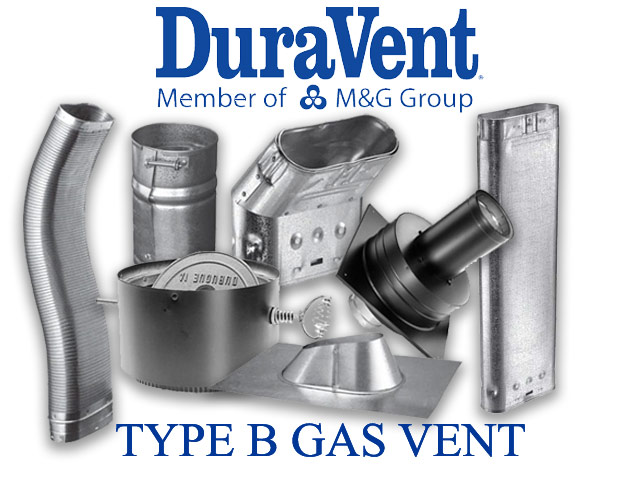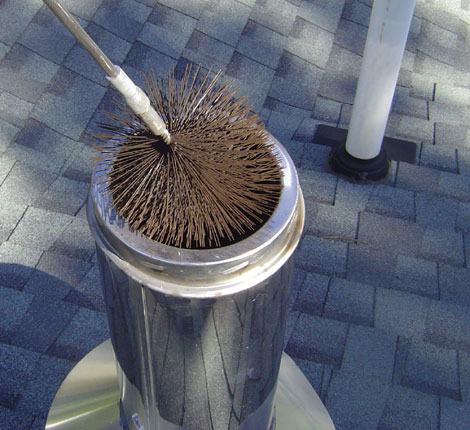Jun 8th 2020
Proper Chimney Pipe Installation Considerations
Proper ventilation provides greater operating efficiencies for stoves, fireplaces and inserts, as well as a home that is free of potentially harmful by-products of burning fuel products. Making sure that your home is properly vented will ensure year-round energy savings while protecting your home against moisture damage in the winter and reduce heat build up throughout the summer. Furnaces, water heaters, and other fuel burning appliances can use more than their fair share of air in your home for combustion, creating a negative pressure inside and causing the appliances to back draft. Inadequate ventilation is a common cause of a smoking fireplace and back drafting can lead to a number of problems including carbon monoxide poisoning.
The purpose of all vents is to remove combustion by-products during normal operation which in turn, provides safe operation and increases burning efficiency. Wood burning fireplaces are naturally vented three feet above the roof of a house or a minimum of two feet above any point of the structure within a ten foot radius. Depending on the fireplace selected, this venting can occur through a masonry or stainless steel, Class A type all-fuel chimney system.
Achieve proper ventilation by keeping these tips in mind...
- Size: The size of the chimney should match the outlet of the size of the appliance. An improperly sized chimney can result in poor draft and excessive creosote formation.
- Offsets: If possible, avoid the use of elbows, tees, and offsets that will restrict the natural draft. A straight vertical installation is more efficient and less likely to develop creosote.
- Placement: Install the chimney in the interior of the structure whenever possible. A cold exterior chimney will produce less draft and generate more creosote.
- Safety: Maintain the manufacturer's clearance to combustible materials. Also, use proper support and bracing, follow local building codes, and have your chimney inspected on a regular basis.

DURAVENT
Gas logs simulate a true wood burning fire from the life-like ceramic fiber, concrete, or refractory logs down to the glowing ember bed, and vibrant dancing flames.
Shop Now
Other system problems that could interfere with proper ventilation...
Resistance from below: Resistance from below exists when negative air pressure fights against the chimney draft and draws smoke backward down the chimney or in an upward direction throughout the home instead of up the chimney. Improper drafting will lead to hazardous gases and smoke possibly backing up into your home. Another problem, called The Stack Effect, sometimes occurs in tall houses that leak large amounts of air in the upper stories: heated air rises, so the warm air inside the house wants to flow upstairs and escape through the leaks. In extreme examples, this can result in negative air pressure below that is stronger than the chimney updraft.
Air invasion: Air Invasion in the chimney causes high-density air to be trapped at flue top altitudes normally occupied by the low-density air that creates ambient updraft.
Flue blockage: Bird nests, fallen bricks, animals, leaves, and many other things can block or partially block a chimney flue and interfere with proper draft.

Frequent cleaning sessions and chimney inspections will ensure proper ventilation and operation of your fireplace chimney. Use a chimney brush to clean chimney and chimney pipe components. If they are full of creosote deposits, the creosote build up could ignite and cause a major chimney and house fire. Chimney inspections should be performed annually or as often as needed when a problem presents itself to avoid chimney drafting issues and poor ventilation.
Problems with carbon monoxide arise when there is improper installation, maintenance or inadequate ventilation. Since carbon monoxide is a tasteless, colorless, odorless gas, it could be harmful or even fatal to your family before you even know it is present in your home. Carbon monoxide poisoning can be prevented and protecting your family against this invisible gas is as easy as installing Carbon Monoxide Detectors on every level of your home. It is best to place carbon monoxide detectors near sleeping areas in the home where the alarm will wake you if it is set off.

